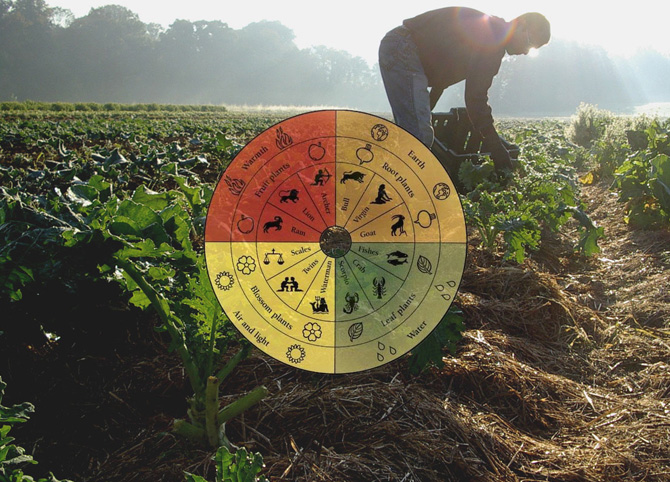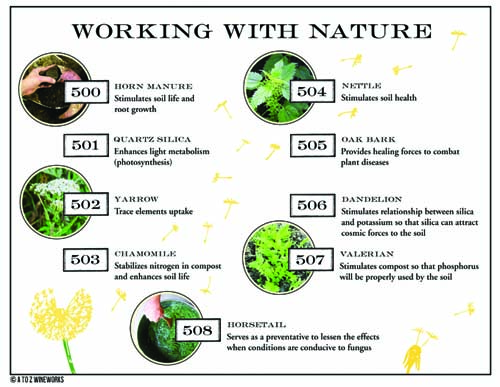 Jan
18
Jan
18
Biodynamic, organic products Great Italian farms
- 18 January 2016
- 1 Comment(s)
Biodynamic Italian farms – Made in Italy
Biodynamic is a holistic, ecological and ethical approach to farming, gardening, food and nutrition. Biodynamics was first developed in the early 1920s based on the spiritual insights and practical suggestions of the Austrian writer, educator and social activist Dr.Rudolf Steiner (1861-1925).
Today, the biodynamic movement encompasses thousands of successful gardens, farms, vineyards and agricultural operations of all kinds and sizes on all continents, in a wide variety of ecological and economic settings.
Biodynamic Italian farmers strive to create a diversified, balanced farm ecosystem that generates health and fertility as much as possible from within the farm itself. Preparations made from fermented manure, minerals and herbs are used to help restore and harmonize the vital life forces of the farmand to enhance the nutrition, quality and flavor of the food being raised. Biodynamic practitioners also recognize and strive to work in cooperation with the subtle influences of the wider cosmos on soil, plant and animal health.
Most biodynamic initiatives seek to embody triple bottom line approaches (ecological, social and economic sustainability), taking inspiration from Steiner’s insights into social and economic life as well as agriculture. Communmity supported agriculture (CSA), for example, was pioneered by biodynamic farmers, and many biodynamic practitioners work in creative partnerships with other farms and with schools, medical and wellness facilities, restaurants, hotels, homes for social therapy and other organizations. Biodynamics is thus not just a holistic agricultural system but also a potent movement for new thinking and practices in all aspects of life connected to food and agriculture.
HISTORY OF ORGANIC FARMING
• 1960s: Pioneering experiences made in organic agriculture
• 1970s: Organic agriculture begins to take off
• Mid 1980s: Cos’ e Biologico, the National Commission for Organic Agriculture, is established.
• 1986: The first Italian Organic Agriculture Standards are published
• 1988: AIAB is founded. The Green Party presents the first proposal for a national law on organic agriculture
• 1990: The first International Conference of Organic Agriculture in the Mediterranean Countries,AgriBioMediterraneo, is held in Vignola
• 1992: FederBio – Federazione Italiana Agricoltura Biologica e Biodinamica, the Italian Federation of Organic and Biodynamic Agriculture is founded
• 2000: In collaboration with the Italian regions, the Ministry of Agriculture, Food and Forestry establishes SINAB, the National Information System for Organic Farming. This platform offers information and services to organic stakeholders for the development and promotion of the sector
• 2008: The 16th Organic World Congress of the International Federation of Organic Agriculture Movements (IFOAM) takes place in Modena.
STANDARDS, LEGISLATION, ORGANIC LOGO
EU legislation on organic farming and other regulations apply in Italy, but there are also additional and provisions. The competent authority is the Ministry of Agriculture, Food and Forestry (Ministero per le Politiche Agricole, Alimentari e Forestali – MiPAAF). Two organizations have private standards of national significance that are more restrictive than the EU Organic legislation: AIAB’s Garanzia AIAB, certified by ICEA, CCPB, IMC, Bios and QCertificazioni Codex, and AMAB’s Garanzia AMAB, certified by IMC. organic Wines
So what is an “organic” wine and how is that status determined? For starters, the term “organic” when applied to agriculture and especially wineries and wines is fluid and varies from country to country. In Italy the term “organic” when applied to wines refers primarily to work done in the vineyard, the front-end of the wine production process. It refers to the process of growing grapes and tending vineyards which is an agricultural or farming activity.
An organic wine in Italy, as elsewhere, refers to wines made from grapes produced in conformance with the principles of organic agriculture. This means that no chemical or artificial fertilizers, herbicides, pesticides or growth hormones or genetically-modified organisms (GMOs) are used in producing the grapes. Only certain natural preparations may be used against insects or plant diseases and only “natural” or organic preparations can be used as fertilizers. As such, it refers to work done in the vineyard and does not include work done in the cellar or the rest of the winemaking process.
A wine in Italy produced from organic grapes is called a biologico wine (or vino biologico) and can be certified as organic by any one of a dozen or more national or international certification organizations. Not all organizations use the exact same standards for certification. But certification is a seal of approval or evidence that the producer has followed organic farming practices in the production of its wine and this certification can give the producer certain bragging rights in the marketing of its wines.
However, it’s important to note that there are some Italian producers that follow the requirements for producing organically-certified wines and consider their wines organic but for various reasons have not pursued formal organic certification. Factors often cited for not pursuing certification include costs, time expended in compliance testing as well as the philisophical precept that what’s important is the end product and not certification per se.
Natural wines
The concept of “natural” winemaking processes is a step up in the organic hierarchy. A “natural” approach to winemaking emphasizes letting nature take its course and minimizing human intervention in the winemaking process. It is a holistic approach to winemaking that looks to all aspects of winemaking, including work done in the cellar as well as the vineyard and offers a dramatically different alternative to the conventional process for making wines.
Natural winemakers typically start with organically-farmed grapes. The grapes are then harvested by hand and brought to the winery for crushing and fermentation. Fermentation and treatment of the wine will take place with a minimum of human intervention in the process. For example, fermentation takes place using only natural or native yeasts present in the vineyard or cellar. Also, the addition of sulfur dioxide (sulfites) to stabilize the wine is discouraged. Ideally, only naturally-occurring sulfites will be present in the wine. Typically, naturally-produced wines will be also be bottled without fining and filtering.
This non-intervention or natural approach is in sharp contrast to conventional fermentation procedures that rely heavily on non-natural yeasts specifically selected on the basis of their ability to achieve certain aromatic, color and flavor profiles for the wine desired by the winemaker. Also, other traditional techniques such as MICRO-OXYGENATION may be used to soften a wine’s tannins while mechanical fermenters have become popular as a way to enhance a wine’s color and concentration. These and other “artificial” procedures are anathema to natural wine advocates.
Natural winemaking is not governed by any uniform code of laws or regulations and there are no certifying organizations that inspect and validate the process. Consequently, it is hard to get reliable numbers on the volume of wines produced under a natural regimen.
However, anecdotal evidence suggests that the natural winemaking movement has gained momentum in recent years largely as a negative reaction to the trend towards “internationalization” of wine styles or what is frequently referred to as the “PARKER EFFECT” after the internationally famous wine critic and author.



One comment on “Biodynamic, organic products Great Italian farms”
It’s an awesome article for all web users. Thank’s and good job!